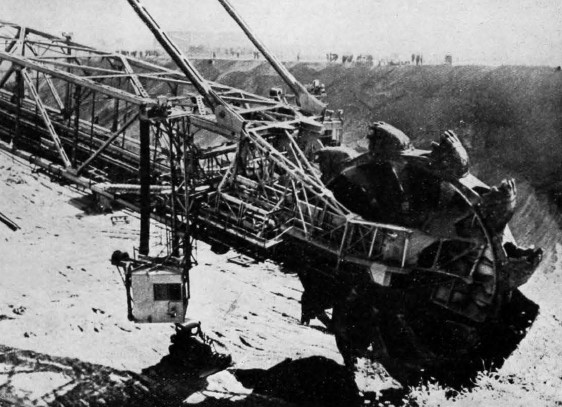January 1956: The bucket wheel behemoth
A bucket wheel excavator set for a German mine was the largest machine of its kind January 1956

The Hebrew word behemoth comes from the Book of Job and over time it has been used to describe entities that are large and powerful, much like very large bucket wheel excavators.
The behemoth and BWE may be ‘unconquerable land-monsters’, but where one brought chaos in mythology, the other continues to bring fortitude to the considerable task it was designed for.
BWEs are items of heavy machinery most commonly used for surface mining and on January 6, 1955, The Engineer reported on the first of a group of five very large BWEs that came into service at the Fortuna opencast lignite mine west of Cologne in Germany.
Built by Orenstein-Koppel und Luebecker Maschinenbau Aktiengesellschaft, the BWE measured 200m long, stood 66m high, and had a capacity of 100,000 cubic metres per 19.5-hour day. At a weight of 5,600 tons, including 170 tons of material on the conveyor belts, the machine was the largest of its kind in existence.
Register now to continue reading
Thanks for visiting The Engineer. You’ve now reached your monthly limit of premium content. Register for free to unlock unlimited access to all of our premium content, as well as the latest technology news, industry opinion and special reports.
Benefits of registering
-
In-depth insights and coverage of key emerging trends
-
Unrestricted access to special reports throughout the year
-
Daily technology news delivered straight to your inbox










Water Sector Talent Exodus Could Cripple The Sector
Maybe if things are essential for the running of a country and we want to pay a fair price we should be running these utilities on a not for profit...